
China
| Full Name | 6 Republic of China | |
| Alliance | Allies - Minor Member Nation or Possession | |
| Entry into WW2 | 7 Jul 1937 | |
| Population in 1939 | 517,568,000 | |
| Military Deaths in WW2 | 4,000,000 | |
| Civilian Deaths in WW2 | 16,000,000 |
Contributor: C. Peter Chen
ww2dbaseChina had been in political turmoil since the 1911 revolution. In fact, civil wars and regional conflicts would continue nearly non-stop into the WW2 era. By 1928, the Nationalist Party, or Kuomintang, based in the capital of Nanjing, had largely emerged as the strongest faction. In the early- to mid-1930s, Nationalist government was able to significantly improve the country's infrastructure and stabilize the economy. Since the establishment of the Republic of China in 1912, sovereignty had slowly been returning to Chinese hands from the European imperial powers, and relationships with the west had also been improving. Foreign nations such as and the Soviet Union and Germany contributed much to the rise of modern China in this period. Behind the steady progress was the Nationalist Party's one-party system, which was maintained by brutal force whenever necessary. Corruption, which was a matter of course in Qing Dynasty China, was inherited by the Nationalist officials, and the party leadership did little to curb such practice.
ww2dbaseIt was around this time that the Chinese Communist Party was formed. Although later Communist literature would claim a great amount of credit in its efforts to better the lives of the ordinary people and to counter the increasing Japanese demands on China, the truth was that the Communist party was only slightly better than a group of bandits in the 1930s, surviving as the result of the Nationalist Party's agreement with the Soviet Union in return for military aid.
ww2dbaseJapan's violation of Chinese sovereignty started as early as 1931 when Japanese troops entered northeastern China, also known as Manchuria, which had a population of about 30,000,000. On 18 Feb 1932, Japan established the puppet nation of Manchukuo, forcibly taking Manchuria away from China. The League of Nations attempted to interfere with Japan's aggression toward China, but failed. With the former Emperor of China, Puyi, nominally at the helm of the puppet nation, Japan used Manchukuo for its rich resources as well as its strategic location to counter Soviet influence in the area. In 1932, Japan attacked the Chinese city of Shanghai, again triumphant over an ineffective League of Nations. The streak of aggression would continue with an invasion of Hebei Province in 1933 and an indirect support of a Mongolian raid into northern China in 1936. Full scale war would finally break out in Jul 1937. Nationalist Chinese leader Chiang Kaishek, previously stressed the need to unify China by defeating the Communists before dealing with external aggression, was kidnapped during the Xi'an Incident and forced to temporarily ally with the Communists. Such an alliance was nominal at best. At first, the Communists undermined Nationalist efforts against the Japanese so to allow the Japanese to inflict maximum damage on the Nationalists, while the Nationalists moved their best divisions and weapons into reserve for the inevitable future civil war against the Communists. Before long, the two sides would engage in actual fighting against each other, although such clashes would be played down on both sides to avoid damage in reputation.
ww2dbaseThe city of Shanghai on the Chinese coast fell under Japanese control in Oct 1937, followed by the capital of Nanjing two months later. Japanese troops committed atrocities, with the most brutal example shown with the Rape of Nanjing, where 50,000 to 300,000 Chinese, mostly civilians and prisoners of war, were murdered and 20,000 women of all ages were raped. Japanese bomber crews were equally brutal against the civilians, dropping their payloads purposefully in residential zones and on clearly marked hospitals. Although out-gunned and out-maneuvered by Japanese troops, the Chinese were determined and were resilient. Fighting primarily a defensive war, the Chinese made use of the vastness of China Proper to trap more and more Japanese troops in this large theater as occupation troops, preventing them from being used offensively in the China-Burma-India Theater or as garrison troops in the Pacific War. To partially counter this, the Japanese organized regiments of Manchurian, Mongolian, and Han Chinese military and gendarmerie units to police the conquered territories. The most powerful collaborationist force in China under Japanese control was the military of the puppet state Manchukuo, which fielded a 220,000-strong military with a small air force and a small navy. The general Chinese population who happened to reside near main railways was pressed into Japanese service as well. These civilians were given the responsibility to quickly repair sections of tracks damaged or destroyed by Chinese saboteurs within eight miles of their places of residence; failures in doing so quickly would often result in reprisal killings.
ww2dbaseAt the end of the war, over 2,000,000 Japanese lived in China, most of whom in Manchuria. Nearly all were deported back to Japan after the war.
ww2dbaseThe eight-year war ended with a great cost on the Chinese population with about 20,000,000 perishing in the conflict, 16,000,000 of that figure civilian. Inflation grew to dangerous levels in the post-war economy, and the situation was worsened by rampant corruption in the Nationalist government. Meanwhile, the Soviet troops that invaded the puppet nation of Manchukuo remained there, providing a safe haven for the Chinese Communists to build up strength and gathered surrendered Japanese equipment. In Mar 1946, the civil war restarted, and a year later the Communist capital of Yenan was taken by the Nationalists, which enjoyed a military advantage and had monetary support from the United States. The Communists quickly turned the tide, however. Through effective propaganda campaigns and popular land reform policies, the Communists secured loyalty from the massive farmer population, thus providing the Communists a nearly unlimited pool of resources from which they could recruit manpower. By late 1947, the Communists had taken control all of northeastern China. Chiang Kaishek suggested an offensive into the northeast, but US Secretary of State George Marshall convinced Chiang to wait, hoping the civil war could end via diplomatic means; although a Nationalist offensive might or might not had been successful, the pause meant the Nationalists had now given away any chance of seizing the initiative. In 1948, the Communists launched an offensive of their own into China Proper, rapidly pushing back Nationalists forces. On 31 Jan 1949, Beiping was declared secure by the Communists. On 21 Apr, the Chinese capital of Nanjing fell under Communist control. The Nationalist government first fled to Guangzhou on 23 Apr, then Chongqing on 15 Oct, followed by Chengdu on 25 Nov.
ww2dbaseRelocation of the Republic of China to Taiwan
ww2dbaseOn 10 Dec 1949, the Nationalists abandoned all positions in mainland China and relocated the Republic of China to the island of Taiwan on 10 Dec 1949. The Nationalists were able to secure quantities of gold reserves and various cultural treasures to Taiwan before they could be captured by the Communists. The Republic of China still remains in Taiwan today with the capital in the city of Taipei. Mainland China today is occupied by a new country formed by the Communist forces which claimed victory in 1949; the communist People's Republic of China renamed Beiping ("Northern Peace") to Beijing ("Northern Capital") to serve as its capital.
ww2dbaseAdministrative Divisions of the Republic of China
| Name (Pinyin) | Name (Postal Map) | Legal Entity | Abbreviation | Capital (Pinyin) | Capital (Postal Map) | Historical Region |
| Andong | Antung | Province | An | Tonghua | Tunghwa | Manchuria |
| Anhui | Anhwei | Province | Wan | Hefei | Hofei | China Proper |
| Chahar | Chahar | Province | Cha | Zhangyuan | Changyuan | Mongolia |
| Zhejiang | Chekiang | Province | Zhe | Hangzhou | Hangchow | China Proper |
| Fujian | Fukien | Province | Min | Fuzhou | Foochow | China Proper |
| Hebei | Hopeh | Province | Ji | Qingyuan | Tsingyuan | China Proper |
| Heilongjiang | Heilungkiang | Province | Hei | Bei'an | Pei'an | Manchuria |
| Hejiang | Hokiang | Province | He | Jiamusi | Chiamussu | Manchuria |
| Henan | Honan | Province | Yu | Kaifeng | Kaifeng | China Proper |
| Hubei | Hupeh | Province | E | Wuchang | Wuchang | China Proper |
| Hunan | Hunan | Province | Xiang | Changsha | Changsha | China Proper |
| Xing'an | Hsing'an | Province | Hailar | Hailar | Manchuria | |
| Rehe | Jehol | Province | Re | Chengde | Chengteh | Mongolia |
| Gansu | Kansu | Province | Long | Lanzhou | Lanchow | China Proper |
| Jiangsu | Kiangsu | Province | Su | Zhenjiang | Chiangkiang | China Proper |
| Jiangxi | Kiangsi | Province | Gan | Nanchang | Nanchang | China Proper |
| Jilin | Kirin | Province | Ji | Jilin | Kirin | Manchuria |
| Guangdong | Kwangtung | Province | Yue | Guangzhou | Canton | China Proper |
| Guangxi | Kwangsi | Province | Gui | Guilin | Kweilin | China Proper |
| Guizhou | Kweichow | Province | Qian | Guiyang | Kweiyang | China Proper |
| Liaobei | Liaopeh | Province | Tao | Liaoyuan | Liaoyuan | Manchuria |
| Liaoning | Liaoning | Province | Liao | Shenyang | Mukden | Manchuria |
| Ningxia | Ningsia | Province | Ning | Yinchuan | Yinchuang | Mongolia |
| Nenjiang | Nunkiang | Province | Nen | Qiqihar | Tsitsihar | Manchuria |
| Shanxi | Shansi | Province | Jin | Taiyuan | Taiyuan | China Proper |
| Shandong | Shantung | Province | Lu | Jinan | Tsinan | China Proper |
| Shaanxi | Shensi | Province | Shan | Xi'an | Sian | China Proper |
| Xikang | Sikang | Province | Kang | Kangding | Kangting | Tibet |
| Xinjiang | Sinkiang | Province | Xin | Dihua | Tihwa | Dzungaria/Tarim Basin |
| Suiyuan | Suiyuan | Province | Sui | Guisui | Kweisui | Mongolia |
| Songjiang | Sungkiang | Province | Song | Mudanjiang | Mutankiang | Manchuria |
| Sichuan | Szechwan | Province | Shu | Chengdu | Chengtu | China Proper |
| Taiwan | Taiwan | Province | Tai | Taipei | Taipei | Taiwan |
| Qinghai | Tsinghai | Province | Qing | Xining | Sining | Tibet |
| Yunnan | Yunnan | Province | Dian | Kunming | Kunming | China Proper |
| Hainan | Hainan | Special District | Qiong | Haikou | Haikow | Hainan |
| Menggu | Menggu | Area | Meng | Kulun | Kulun | Mongolia |
| Xizang | Sizang | Area | Zang | Lhasa | Lhasa | Tibet |
ww2dbaseSources:
Jung Chang, Mao
Philip Jowett, China's Wars
Wikipedia.
Last Major Update: Mar 2010
| Events Taken Place in China | ||
| Jinan Incident | 3 May 1928 | |
| Xinjiang Wars | 20 Feb 1931 - 30 Oct 1937 | |
| Mukden Incident | 18 Sep 1931 - 19 Sep 1931 | |
| Battle of Qiqihar | 4 Nov 1931 - 18 Nov 1931 | |
| Battle of Jinzhou | 21 Dec 1931 - 3 Jan 1932 | |
| Battle of Harbin and Establishment of Manchukuo | 25 Jan 1932 - 4 Feb 1932 | |
| First Battle of Shanghai | 28 Jan 1932 - 8 Mar 1932 | |
| First Battle of Hebei | 1 Jan 1933 - 22 May 1933 | |
| Tauran Incident | 11 Mar 1936 | |
| Battle of Suiyuan | 20 Oct 1936 - 17 Nov 1936 | |
| Xi'an Incident | 12 Dec 1936 - 24 Dec 1936 | |
| Lugou Bridge Incident and Second Battle of Hebei | 7 Jul 1937 - 8 Aug 1937 | |
| Battle of Chahar | 1 Aug 1937 - 12 Aug 1937 | |
| Beiping-Hankou Railway and Tianjin-Pukou Railway Operations | 1 Aug 1937 - 31 Dec 1937 | |
| Second Battle of Shanghai | 13 Aug 1937 - 9 Nov 1937 | |
| Bombing of Shanghai, Chongqing, and other Cities | 15 Aug 1937 - 23 Aug 1943 | |
| Battle of Shanxi | 1 Sep 1937 - 11 Nov 1937 | |
| Battle of Nanjing and the Rape of Nanjing | 9 Dec 1937 - 31 Jan 1938 | |
| Burma Road and the Hump | 1 Jan 1938 - 10 Nov 1945 | |
| Henan Campaign | 7 Feb 1938 - 10 Jun 1938 | |
| Battle of Xuzhou | 24 Mar 1938 - 1 May 1938 | |
| Battle of Xiamen | 10 May 1938 - 12 May 1938 | |
| Battle of Wuhan | 11 Jun 1938 - 27 Oct 1938 | |
| Guangdong Operation | 12 Oct 1938 - 31 Dec 1938 | |
| Battle of Hainan | 9 Feb 1939 - 12 Feb 1939 | |
| Battle of Nanchang | 17 Mar 1939 - 9 May 1939 | |
| Battle of Suixian-Zaoyang | 20 Apr 1939 - 24 May 1939 | |
| Battle of Khalkhin Gol | 11 May 1939 - 31 Aug 1939 | |
| Tianjin Incident | 14 Jun 1939 - 20 Aug 1939 | |
| First Battle of Changsha | 17 Sep 1939 - 6 Oct 1939 | |
| Winter Offensive | 1 Dec 1939 - 30 Mar 1940 | |
| Battle of Wuyuan | 28 Jan 1940 - 3 Apr 1940 | |
| Battle of Zaoyang-Yichang | 1 May 1940 - 18 Jun 1940 | |
| Hundred Regiments Offensive | 20 Aug 1940 - 30 Sep 1940 | |
| Battle of Huangqiao | 4 Oct 1940 - 10 Oct 1940 | |
| Battle of Han River | 25 Nov 1940 - 30 Nov 1940 | |
| New Fourth Army incident | 5 Jan 1941 - 13 Jan 1941 | |
| Battle of South Henan | 30 Jan 1941 - 1 Mar 1941 | |
| Battle of South Shanxi | 7 May 1941 - 27 May 1941 | |
| Second Battle of Changsha | 6 Sep 1941 - 8 Oct 1941 | |
| Third Battle of Changsha | 24 Dec 1941 - 15 Jan 1942 | |
| Zhejiang-Jiangxi Campaign | 15 May 1942 - 15 Sep 1942 | |
| Battle of Exi | 5 May 1943 - 11 Jun 1943 | |
| Battle of Changde | 2 Nov 1943 - 20 Dec 1943 | |
| Salween Offensive | 1 Apr 1944 - 27 Jan 1945 | |
| Operation Ichigo | 19 Apr 1944 - 31 Dec 1944 | |
| Battle of Zhijiang | 1 Apr 1945 - 30 Jun 1945 | |
| Manchurian Strategic Offensive | 9 Aug 1945 - 2 Sep 1945 | |
| Japan's Surrender | 14 Aug 1945 - 2 Sep 1945 | |
| Aircraft | ||
| C-0101 | X-PO | |
| Ships | ||||
| Haichen | Hairong | Ninghai | Tongji | Zhaohe-class |
| Haichou | Hairong-class | Ninghai-class | Yingrui | |
| Haiqi | Minquan | Pinghai | Zhaohe | |
| Weapons | ||
| Hanyang Type 88 Rifle | ||
Photographs
 | 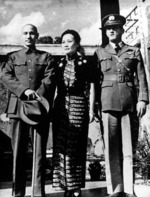 | 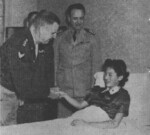 |  |
 | 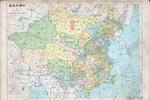 | 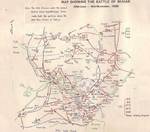 | 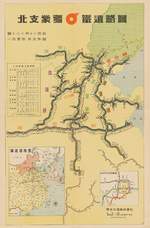 |
China in World War II Interactive Map
Please consider supporting us on Patreon. Even $1 per month will go a long way! Thank you. Please help us spread the word: Stay updated with WW2DB: |
Visitor Submitted Comments
6 Mar 2010 05:24:24 PM
China is one of the worlds oldest and continued as one of the most advanced cultures for centuries. China had gun power, movable type and printed text centuries before Gutenberg printed his first Bible in Germany.
Japan wanted be to thought of as a cultured and civilized society, and still wants to be held in a postion of respect and authority in the world.
Germany has admitted and accepted blame for their world time crimes and has made restitution to many of its victims.
When Japan takes blame and accepts responsibility for their crimes during the war then maybe people will think more highly of them. They continue to deny the Rape of Nanjing and the many other things they did with official approval during the war.
My wife and I vacationed in Canada a few years ago. We went to the International Peace Memorial. The Tour Guide told us how the Pope had brought water from the Peace Memorial at the Atomic Bomb Memorial in Japan and put it into the fountain in Canada's Peace Memorial.
I said while he was at it he should have brought water from Pearl Harbor. Then I added there would never have been any need for the bombs if the Japanese hadn't first bombed Pearl Harbor and committed the crimes they did in World War II. A good number of other tourists said I was right and agreed with me.
If you go to these links there is plenty of proof of the Japanese crimes against the Chinese and many POWs. Be prepared it is graphic evidence of the crimes.
http://www.gendercide.org/case_nanking.html
http://www.centurychina.com/wiihist/njmassac/rape.htm
http://www.historyplace.com/worldhistory/genocide/nanking.htm
http://www.centurychina.com/wiihist/njmassac/nmintro.htm
http://www.centurychina.com/wiihist/njmassac/killgame.htm
http://www.centurychina.com/wiihist/njmassac/killrive.htm
30 Mar 2010 08:41:10 AM
Passing blame and judgement on a generation far removed from historic atrocites is both fruitless and inappropriate. This applies to all nations and cultures.
I'm fairly certain that the Japanese of today do not share the same views that permitted such behavior in WW2.
Much the same way that we can't assume all Germans are somehow homicidal racists.
Or that all Americans are automatically pro-slavery.
The events of the past should be studied and learned from, so as not to repeat mistakes. But in no way are the current generations responsible for the actions of their ancestors.
That aside, for a long time in Japan to admit defeat was a great shame. And the practice of suicide in place of shame wasn't terribly uncommon. This same attitude was expressed toward their enemies as well. Those who admitted defeat and gave themselves up were of greater shame for not ending their own lives, and thus had no rights as humans.
MOST of the world found this to be rather appalling, but such was the culture at the time. But again, things change. And it would be unfair to discriminate against modern Japan, or any other nation, based on a cultural relic of their past.
25 Apr 2025 07:00:15 PM
We will never forget
All visitor submitted comments are opinions of those making the submissions and do not reflect views of WW2DB.

- » Wreck of Teruzuki Found (27 Jul 2025)
- » USS Orlean's Bow Found (22 Jul 2025)
- » The Emperor of Japan Planned to Honor WW2-era Japanese POWs in Mongolia (4 Jul 2025)
- » US State Lawmaker John Winter Caught Using Racial Slur "Jap" and Apologized (11 Jun 2025)
- » US Government Plans to Purge WW2 Information (17 Mar 2025)
- » See all news
- » 1,182 biographies
- » 337 events
- » 45,131 timeline entries
- » 1,249 ships
- » 350 aircraft models
- » 207 vehicle models
- » 376 weapon models
- » 123 historical documents
- » 261 facilities
- » 470 book reviews
- » 28,430 photos
- » 365 maps
James Forrestal, Secretary of the Navy, 23 Feb 1945
Please consider supporting us on Patreon. Even $1 a month will go a long way. Thank you!
Or, please support us by purchasing some WW2DB merchandise at TeeSpring, Thank you!
6 Mar 2010 06:51:12 AM
I was at our doctors' office a few years ago when I read a review of Iris Chang's' book "The Rape Of Nanjing". As soon as I was able to purchase a copy I did.
What the Japanese did to the people of this country and to the citizens of Nanjing really necessitated a stronger response from the US military authorities after the war.
Iris Chang said once she hoped people would read the book and then pass it on.
I contacted some individuals during a search for the book. There is site dedicated to the "Rape of Nan I told them my father had been at Hickam on 12/7/1941. Before going into the Pacific after the Japanese their Units were shown movies of Nankjing. These movies were smuggled out of China.
My father told us of seeing the using of Chinese POWs as living Bayonet dummies and the burying alive of thousands of Chinese.
The Air Corp wanted the men to know what to expect from the Japanese if captured.
The Japanese continue to deny these events took place. The trail of guilt goes to the house of the emperor of Japan. He had relation who were at Nanjing.
Many of the Japanese still deny or haven't been taught of their terrible treatment of POWs and population groups during the war.
Get the book, rent the DVD or search but find out and educate yourself as to what the Japanese leadership approved of and the real crimes committed during the war.
During the Rape of Nanjing two Japanese officers had a contest to see who could behead the most Chinese. Only after one Japanese officer damaged his sword trying to split a Chinese soldier through his helmet did they stop.
At this time maybe 200 men had been behead total and the heads lined up at trophies.